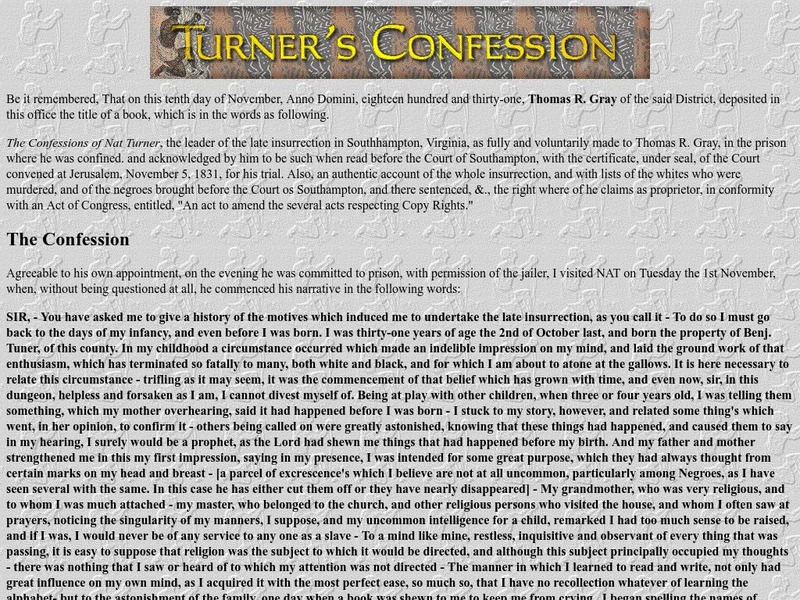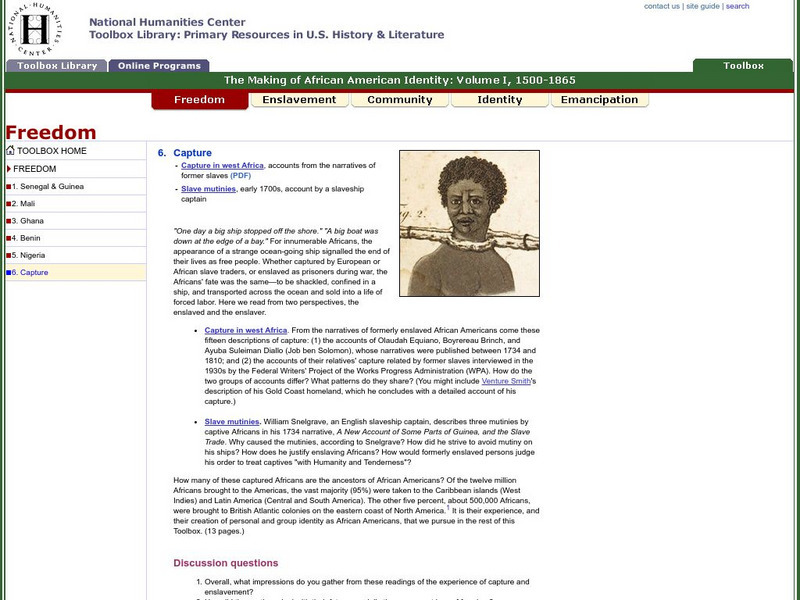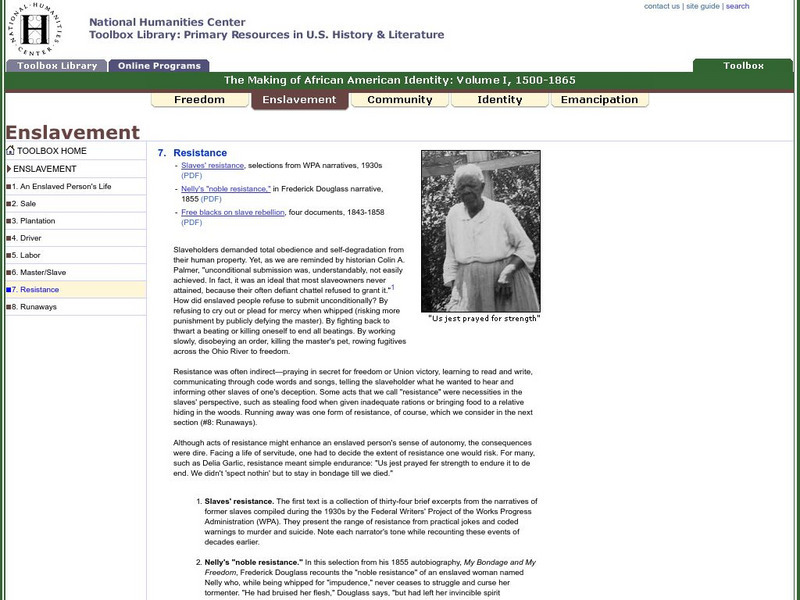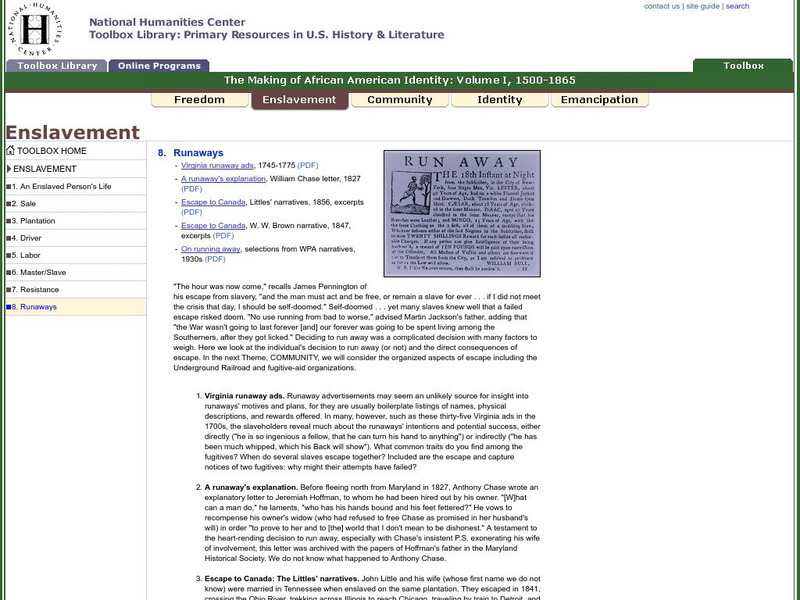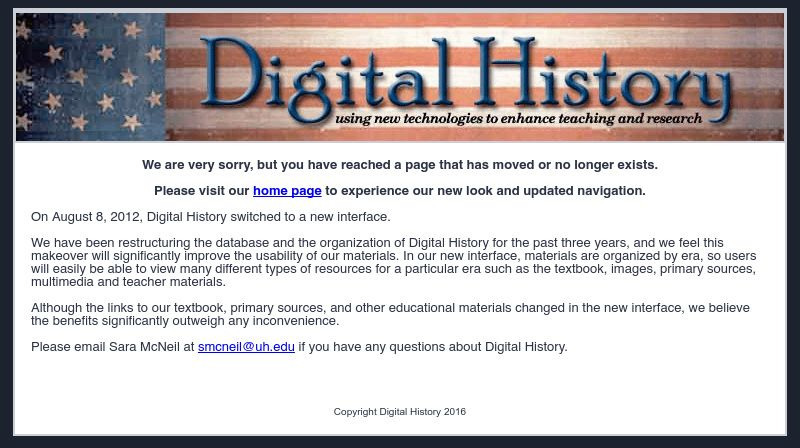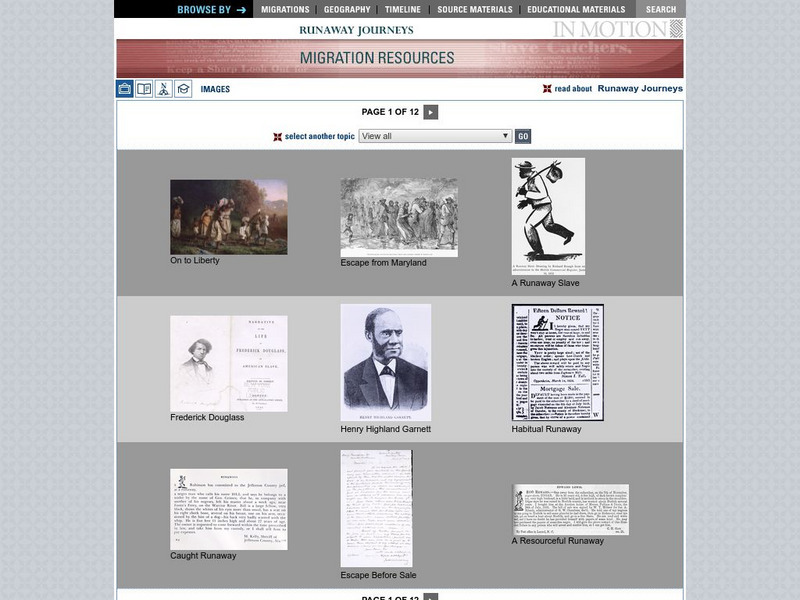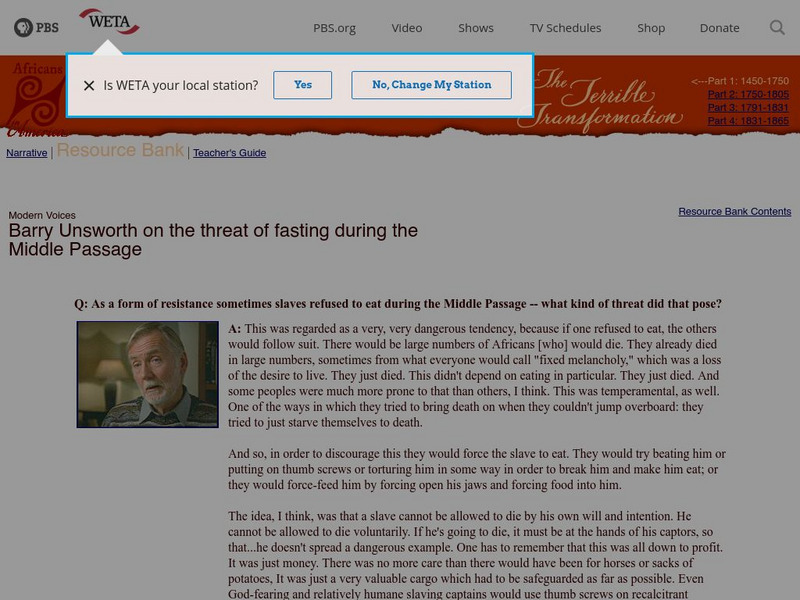Carolina K-12
“Stealing a Little Freedom”: Slave Runaways in North Carolina
As part of a study of slavery during the US colonial period, class members investigate why enslaved people ran away, the risks inherent in escaping, and the methods used to locate them.
Center for Literacy and Disability Studies
Slave Resistance
How did colonial enslaved people in America struggle to defend themselves and maintain their African heritage?
Livaudais-Baker English Classroom
Kindred Unit Project
To conclude a unit study of Octavia E. Butler's Kindred, groups use MovieMaker or the class website to publish an original story about slavery in America. The detailed project assignment sheet includes a list of possible topics,...
Center for History Education
The Untold Story: The Black Struggle for Freedom during the Revolutionary War in Maryland
The American Revolution brought freedom to select groups and ignored others. An enlightening resource highlights the struggle of African Americans during the American Revolution and their efforts to escape slavery. Scholars analyze...
Smithsonian Institution
Fighting For Freedom: The Stono Rebellion and Free Frank McWhorter
Travel back in time to the Stono Rebellion. Young historians research historical figures who played a role in African Americans' fight to escape slavery. Scholars research material, complete handouts, participate in group discussion, and...
National Park Service
Lesson 3: Resistance
During the time of slavery, resistance was a way of life for the men and women held in bondage. Using music as evidence of their fight against oppression, learners explore how enslaved people fought back. Writing prompts round out the...
Alabama Department of Archives and History
Alabama Slave Codes in 1833: What They Can Teach Us About Slaves Themselves
After viewing a short PowerPoint about Nat Turner's rebellion, class groups examine Alabama's 1833 slave codes. Individuals then develop a mini-legal brief arguing against one particular slave law.
University of Virginia
Virginia Center for Digital History: The Geography of Slavery in Virginia
A digital collection of advertisements for runaway and captured slaves in the period before the American Civil War. In addition, there are historical documents related to slavery. Gives the option of browsing or doing a detailed search....
Other
Uncut Black Experience: Turner's Confession
Text of the confession of Nat Turner, leader of a bloody slave revolt.
Library of Virginia
Virginia Memory: Death or Liberty: Gabriel's Rebellion
This lesson explores the Gabriel Rebellion of 1800 where an intended slave rebellion led by a slave never got off the ground due to the extreme weather that disrupted plans. Gabriel, the slave, was literate and was influenced by...
Other
Widener University: The Nat Turner Project
The Nat Turner Project is a digital archive of primary source materials related to the Nat Turner Slave Rebellion, beginning with the experiences and living conditions of slaves prior to the revolt. The archive houses newspaper articles,...
National Humanities Center
National Humanities Center: Toolbox Library: Capture, Making of African American Identity: V. 1
Several narratives of the capture of West Africans, including the famous autobiography of Venture Smith, from the eighteenth century, two accounts of conditions on slave ships, and an audio recording of the memories of the descendants of...
National Humanities Center
National Humanities Center: Toolbox Library: Resistance, Making of African American Identity: V. 1
Recollections of slave resistance by observers like Frederick Douglass, narratives of slave resistance collected during the Depression, and mid-nineteenth century accounts by former slaves calling for resistance to and overthrow of the...
National Humanities Center
National Humanities Center: Toolbox Library: Runaways, Making of African American Identity: V. 1
Several accounts by slaves of running away from bondage, written in the nineteenth century and also recorded in the 1930s, as well as newspaper advertisements seeking information about fugitive slaves in the eighteenth century.
Digital History
Digital History: Methods of Controlling Slaves [Pdf]
Slave masters felt that controlling slaves was a necessity. Read about three ways slaves were controlled in the slavery system, and read an account by Frederick Douglass about how his master, in particular, kept his slaves in line. [pdf]
Digital History
Digital History: Responses to Slavery: Spirituals and Stories [Pdf]
Find the lyrics to spirituals slaves sang that gave a glimpse into their lives and gave them hope for freedom. In addition, read some of the stories slaves told that showed how they offered passive resistance to their plight of slavery....
Digital History
Digital History: Slave Culture
Find out about the contributions African slaves and African American slaves made to not only their culture, but American culture in general. See what words have African roots, how African culture influenced food and music, and how there...
New York Public Library
Aame: Runaway Journeys: Maroon Communities and Major Slave Revolts
A map showing the major slave rebellions in the United States in the 17th-19th centuries.
PBS
Pbs: Cet: Africans in America: The Threat of Fasting During the Middle Passage
Description of how slaves tried to starve themselves to death on slave ships as a form of resistance, and how the slave traders forced them to eat so they would not lose money. Click on Teacher's Guide for teaching resources.
Library of Congress
Loc: Slavery the Peculiar Institution
Opposition to slavery was growing as slaves rebelled, mutinied, or ran escaped from owners. View these resistance strategies through the following primary sources that include art, original maps, testimonies, newspapers, and letters.
Library of Virginia
Death or Liberty: Gabriel, Nat Turner and John Brown
Online exhibit with primary documents about slavery revolts in Virginia.
Other
The Abolitionist: History and Geography of the Underground Railroad
Read a comprehensive account of the Underground Railroad, how it was organized, and the routes that were used. Be sure to read all three parts.
Independence Hall Association
U.s. History: Rebellions on and Off the Plantation
Slaves resisted their bondage in many ways. Read about the revolts planned and executed by Denmark Vesey and Nat Turner, the southern reactions to those revolts, and the ways slaves individually resisted their enslavement.
University of Richmond
History Engine: Escape Through Death: The Story of Fugitive Margaret Garner
Retells the story of fugitive slave, Margaret Garner, who cut the throat of her three year old child in order to save her from a life of slavery.










